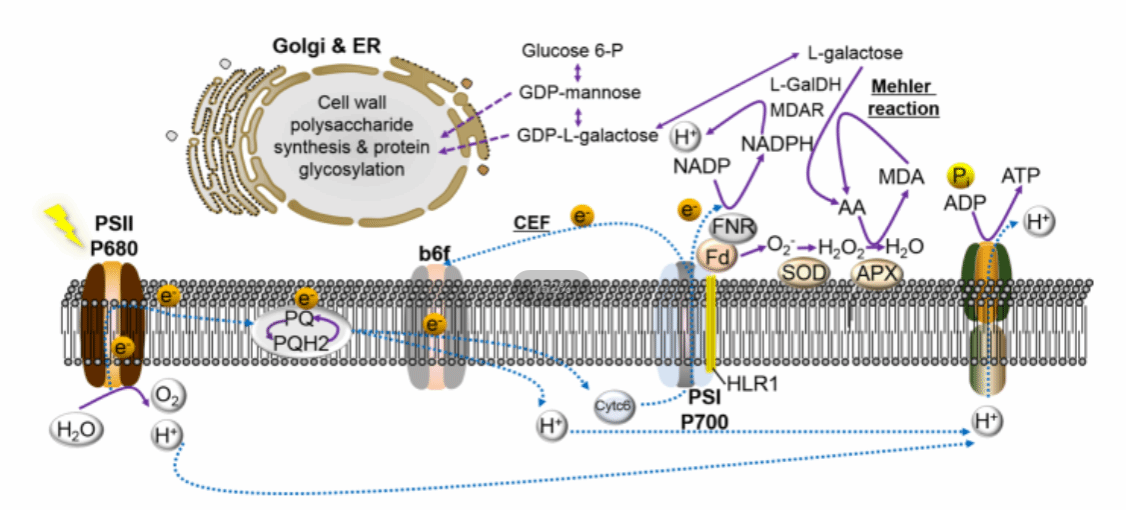
Abstract:
Diverse algae of the red lineage possess chlorophyll a-binding proteins termed LHCR, comprising the PSI light-harvesting system, which represent an ancient antenna form that evolved in red algae and was acquired through secondary endosymbiosis. However, the function and regulation of LHCR complexes remain obscure. Here we describe isolation of a Nannochloropsis oceanica LHCR mutant, named hlr1, which exhibits a greater tolerance to highlight (HL) stress compared to the wild type. We show that increased tolerance to HL of the mutant can be attributed to alterations in PSI, making it less prone to ROS production, thereby limiting oxidative damage and favoring growth in HL. HLR1 deficiency attenuates PSI light-harvesting capacity and growth of the mutant under light-limiting conditions. We conclude that HLR1, a member of a conserved and broadly distributed clade of LHCR proteins, plays a pivotal role in a dynamic balancing act between photoprotection and efficient light
harvesting for photosynthesis.
文章链接:https://www.nature.com/articles/s41467-021-20967-1